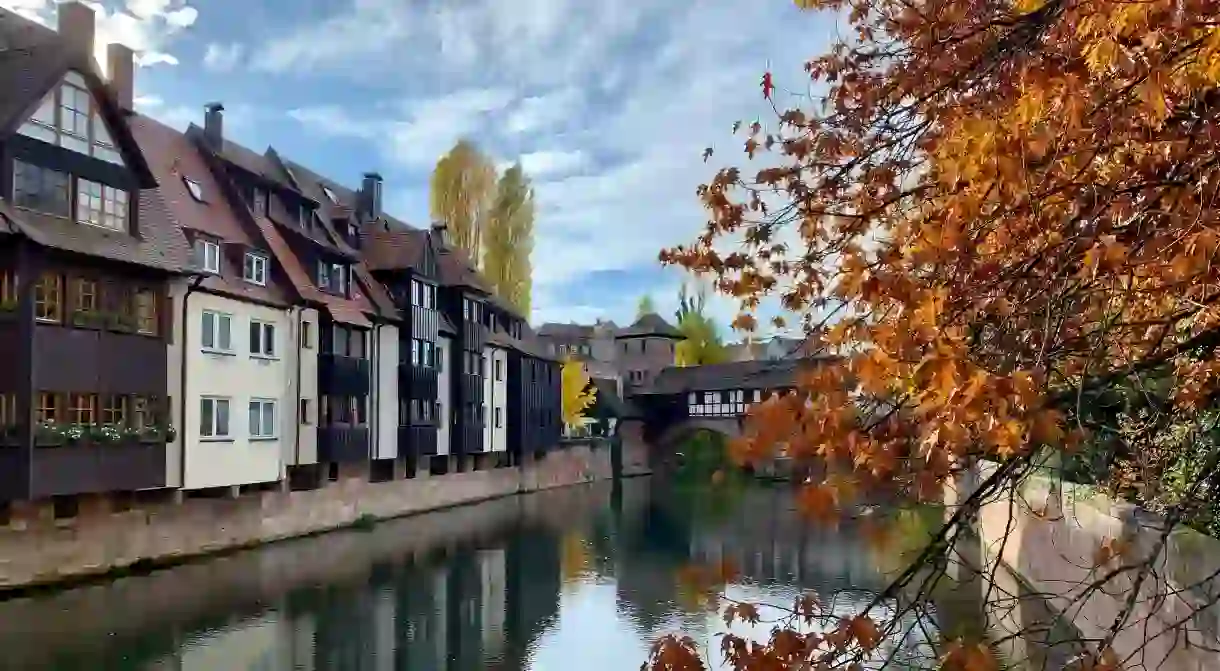Discover the 10 Must-See Attractions in Nuremberg, Germany

The 950-year-old Bavarian city combines romantic charm with a turbulent past. Eat at the world’s oldest bratwurst restaurant, Zum Gulden Stern, explore Albrecht Dürer’s house and see the former Nazi party rally grounds – these are just a handful of things to do in Nuremberg.
Known for its sausages, gingerbread and handmade toys, it’s clear that Nuremberg has something to offer everyone. Delve into the medieval city’s colourful, and often tumultuous, history before wandering the picturesque streets of the old town and venturing inside its impressive churches and castle. Here’s what we recommend you put at the top of your to-do list while you’re there.
Visit Nuremberg Castle
Building

Whenever the emperor of the Holy Roman Empire returned to the Imperial Castle, his arrival would be heralded by a procession, festive music and the ringing of bells. Now, in the Knight’s Hall you can see an animated version of the spectacular scene depicted above the windows. The castle in its current form was built in the 13th century. Wander around the lavish Imperial Hall, admire the views from the Sinwell Tower or peer 48m (158ft) into the Deep Well.
Learn about Nuremberg’s history at the Weinstadel
Historical Landmark

A typical medieval wine warehouse, the Weinstadel was originally built to house lepers who were allowed into the city for three days at Easter to receive food, clothing and medical attention. Since then it’s been a wine store, workhouse, spinnery and, more recently, a student dorm. Today, you can take photos of the beautiful half-timbered building, which sits next to the covered walkway known as Hangman’s Bridge – built to protect the hangman from infection.
Peek inside Albrecht Dürer's House
Architectural Landmark

A recently restored building, the house of the Renaissance artist Albrecht Dürer is now a museum dedicated to the artist’s life and work. His works are currently on display in every corner of the world, even on chocolate bars and currency. Dürer is widely regarded as having changed the course of art history in terms of his mania for perfection and bringing technology to the medium of engraving. The timber-framed house houses sketches and engravings by the man himself – it is definitely worth seeing.
See the former Nazi Party rally grounds
Historical Landmark
This monstrous structure is what remains from the megalomania of the National Socialist regime. It was here that Adolf Hitler infamously held a series of Nazi party rallies between 1933 and 1938. The unfinished Congress Hall is a vivid reminder of the period, covering 11sqkm (4.2sqmi) and designed for 50,000 spectators. It even boasted barracks where sympathisers could stay for weekend-long rallies. Today, the grounds are widely explorable and represent one of the only remaining mass architectural pieces left intact after World War II.
Eat bratwurst at Zum Gulden Stern
Restaurant, German
Explore the medieval dungeons
Historical Landmark

Marvel at historic artefacts inside the Germanisches Nationalmuseum
Museum
Admire the beautiful Lorenz Church
Building, Church
Book dinner at the Heilig-Geist-Spital
Restaurant, German
Tours & Trips in Germany

Eliza Marin contributed additional reporting to this article.













